Extensive Scanning Reveals New Secrets of the Pyramids : A Well Thought Out Scream by James Riordan
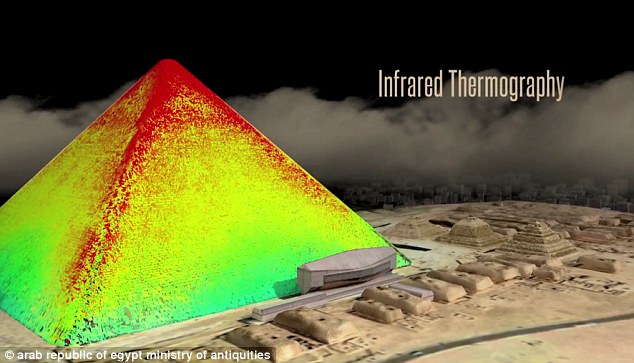
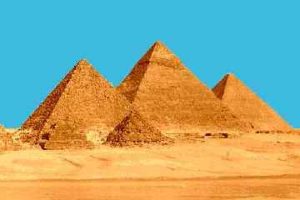 After thousands of years of studying them we still know very little about the Great Pyramids of Egypt . An effort to scan the pyramids using advanced technologies such as infrared thermography, photogrammetry, radiographic muons, scanner and 3D reconstruction was begun in 2015 and this past week the archaeological committee working on the program reviewed their findings with Dr Khaled El-Enany, Egypt’s minister of antiquities on October 13th. The aim of the committee is to study the great pyramid of Khufu and the pyramid of Khafre on the Giza plateau, as well as two pyramids on the site of Dahshur known as Bent and Red.
After thousands of years of studying them we still know very little about the Great Pyramids of Egypt . An effort to scan the pyramids using advanced technologies such as infrared thermography, photogrammetry, radiographic muons, scanner and 3D reconstruction was begun in 2015 and this past week the archaeological committee working on the program reviewed their findings with Dr Khaled El-Enany, Egypt’s minister of antiquities on October 13th. The aim of the committee is to study the great pyramid of Khufu and the pyramid of Khafre on the Giza plateau, as well as two pyramids on the site of Dahshur known as Bent and Red.
ScanPyramids hopes to map and probe the heart of Egypt’s largest pyramids of Egypt, without drilling a single hole in the structures. During this latest meeting the co-ordinator of the project Dr. Hani Helal, went over the achievements of the mission after a first year of archaeological work inside the Great Pyramid of Khufu and the Dahshur Bent Pyramid.
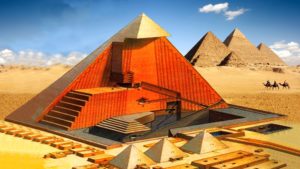 While findings are not clear-cut in Bent Pyramid, work inside the Great Pyramid of Khufu (also known as Giza pyramid) has yielded interesting results. The team has located two anomalies in the structure built 4,500 years ago under King Khufu – one at the upper part of the entrance gate and the second at its northern eastern side. Now more research will begin to identify the natures of these anomalies as well as their functions, nature and sizes.
While findings are not clear-cut in Bent Pyramid, work inside the Great Pyramid of Khufu (also known as Giza pyramid) has yielded interesting results. The team has located two anomalies in the structure built 4,500 years ago under King Khufu – one at the upper part of the entrance gate and the second at its northern eastern side. Now more research will begin to identify the natures of these anomalies as well as their functions, nature and sizes.
At 146 metres (480 feet) tall, Khufu pyramid, named after the son of pharaoh Snefru, is considered one of the seven wonders of the ancient world. It has three known chambers, and like other pyramids in Egypt was intended as a pharaoh’s tomb. “We are now able to confirm the existence of a ‘void’ hidden behind the north face, that could have the form of at least one corridor going inside the Great Pyramid,” scientists from Operation ScanPyramids said in a statement.
Another “cavity” was discovered on the pyramid’s northeast flank, said the researchers who are using radiography and 3D reconstruction for their study. What secrets do experts hope to uncover?
What could those anomalies be? More than four millennia after being built, the pyramids still remain mysterious. The construction process in particular has puzzled Egyptologists for years.
Khufu pyramid, the last of the Seven Wonders of the Ancient World still in ex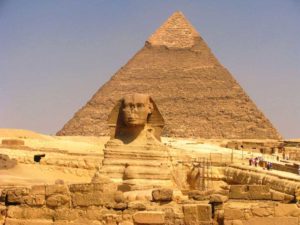 istence
istence
, is so massive that they have often wondered how ancient Egyptians managed to erect it. ScanPyramids scientists hope to uncover new clues to understand how it was built in just 25 years.
But it is perhaps the internal structure of the pyramids that remains most enigmatic. In particular it is not clear what purpose the anomalies noticed with the scanning technologies serve, but Egyptologists know that as the Pharaoh’s burial complex, they were constructed to be inviolable. It is therefore possible that the anomalies are signs of obstacles to protect Egypt’s rulers after death or that they correspond to hidden, secret chambers.
The project applies a mix of infrared thermography, muon radiography imaging and 3D reconstruction — all of which the researchers say are non-invasive and non-destructive techniques.
Muons are “similar to X-rays which can penetrate the body and allow bone imaging” and “can go through hundreds of meters of stone before being absorbed,” ScanPyramids explained in a statement.
“Judiciously placed detectors — for example inside a pyramid, below a potential, unknown chamber — can then record particle tracks and discern cavities from denser regions.”
The three large pyramids of Menkaure (L), Khafre (C) and Khufu loom over the horizon November 13, 2004 at Giza, just outside Cairo, Egypt. The three large pyramids at Giza, built by King Khufu over a 30 year period around 2,550 B.C., are among Egypt’s biggest tourist attractions. (Photo by Sean Gallup/Getty Images)
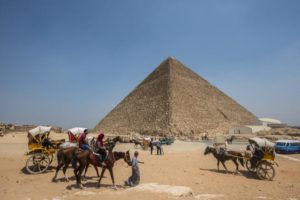 In late 2015, Egypt started radar scans of Tutankhamun’s tomb in the Valley of the Kings in southern Egypt, after a British archaeologist theorised that Nefertiti was buried in a secret chamber there.
In late 2015, Egypt started radar scans of Tutankhamun’s tomb in the Valley of the Kings in southern Egypt, after a British archaeologist theorised that Nefertiti was buried in a secret chamber there.
Nicholas Reeves suggested that Tutankhamun’s tomb was in fact Nefertiti’s, and when the boy king died unexpectedly at a young age, he was rushed into her tomb’s outer chamber.
But Egyptologists have since differed on whether there is a secret chamber in the tomb and further analysis is expected.
___


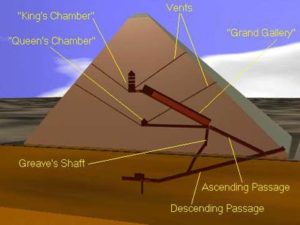
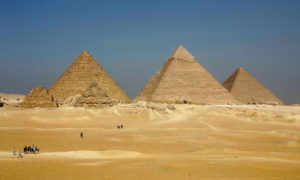
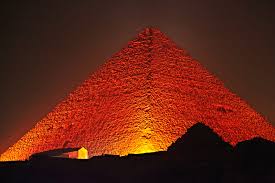

No Comment